First Of Tata’s ‘Avinya’ EVs Set For End-2025 Launch; JLR Platform To Unlock 150 kW+ DC Fast-Charging
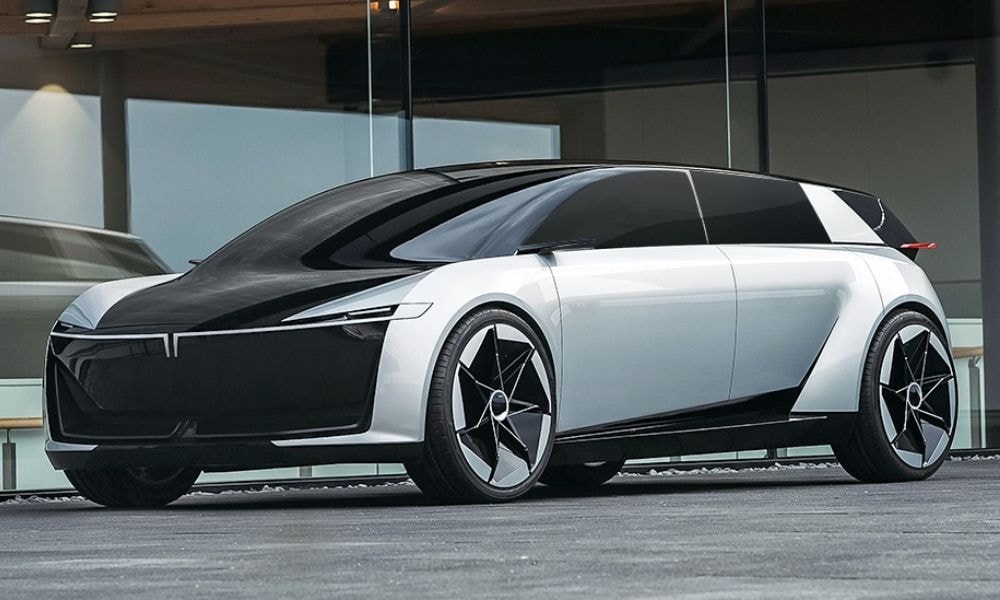
- All premium Tata EVs introduced under the Avinya range will have over 550 kilometres of range on a full charge.
- JLR’s dedicated EV architecture will enable ultrafast charging at speeds of up to 300 kW.
- Product development time to drop by over 25 per cent thanks to this collaboration.
Building on the encouraging start it has made in India’s fast-growing electric vehicle (EV) market, Tata Motors is now gearing up to enter higher, more premium vehicle segments with its upcoming EV models. It has confirmed the first offering under its ‘Avinya’ family of battery-powered premium cars will arrive towards the end of 2025, and will benefit in a big way from the dedicated EV architecture it is based on, which is being sourced under licence from JLR (formerly Jaguar Land Rover). All cars from the Avinya model family, which will be based on JLR’s Electrified Modular Architecture (EMA) will have a range of 550 kilometres and above, and will also have ultrafast-charging capability not yet seen on any existing Tata EV.
Also Read: Tata Avinya EVs To Be Based On JLR’s Electrified Modular Architecture

Tata's Avinya range of EVs will be based on JLR's dedicated EV platform named EMA.
Speaking to the media after the announcement of Tata Passenger Electric Mobility (TPEM) and JLR entering into a strategic collaboration for platform-sharing, Anand Kulkarni, Chief Product Officer and Head of High-Voltage Programs at TPEM, confirmed work on the first Tata EV based on EMA has been underway for some time now, and that its market launch is roughly two years away. However, Kulkarni highlighted the platform-sharing exercise should help shorten product development time by well over “25 per cent”.
“When you build a platform of such intricacies and complexities, there are a lot of integration aspects that need to be looked at, a lot of use cases and failure modes. That in itself is a fairly intense activity; if you’re able to pivot on something that's ready and a lot of development has taken place, that in itself leads to a time-saving, and more importantly, an assured way of getting into that product without having to go through a learning loop all over again. That is an infinitely valuable benefit from our perspective. Development cycles are shrinking everywhere, so it is absolutely the best way to sort of collaborate, join hands and move forward together. And that's what the EMA platform allows us to do today. With it, we can accelerate the entire development time by upwards of 25 per cent”, Kulkarni told carandbike.com.
Also Read: Tata Motors Plans To Open EV-Only Showrooms In India Soon
The Avinya family of EVs are expected to be offered with single- and dual-motor options, and accommodate battery packs of close to 80 kWh capacity. For perspective, the current Nexon EV Max has a 40.5 kWh battery pack. Kulkarni confirmed the platform can support ultra-fast DC charging in excess of 150 kW. We expect it to be capable of even higher (up to 300 kW).

Avinya won't be a single model, but a family of multiple high-end electric vehicles.
“It [EMA] is a very capable platform, in terms of charging, it's more dependent on what kind of charging infrastructure is available. If JLR's platform is being developed for global markets, you know what the global standards are today in this space, so rest assured that it will be capable of supporting that”, Kulkarni told carandbike.
Also Read: Tata To Build 40GWh EV Cell Gigafactory In The UK; Batteries To Be Supplied To JLR
TPEM and JLR have entered into a memorandum of understanding (MOU), which will grant the former access to EMA under licence, along with JLR’s electronics and electrical (E&E) architecture, electric drive unit, battery assembly and manufacturing know-how, in exchange for royalty payments. The EMA has an integrated propulsion system that unites cell-to-pack (CTP) battery technology, battery management and charging system to maximise range and efficiency. Tata says JLR’s E&E architecture enables Level 2 autonomous driving capabilities (with scope to upgrade to Level 3), and will help quicken the progress of over-the-air software and feature updates. Additionally, this partnership will help align sourcing of key components for all vehicles based on this platform, which is future-proofed for global crash test requirements.

Some of Tata's upcoming EVs, including the Curvv coupe-SUV, will employ a heavily modified combustion engine platform.
While EMA will be utilised for the company’s pricier, high-end offerings, Tata intends to continue using its existing architectures that underpin EVs it currently sells, as well as the ones that are just around the corner. However, Kulkarni said that certain technologies, components and features that will be central to EMA vehicles will also eventually trickle down into its more affordable EVs.
Also Read: JLR To Procure Battery Cells From Tata's Agratas; Targets Range Of Up To 730 KM For Future EVs
“EMA is meant for premium pure electric vehicles. Obviously that's not the only segment that we will develop products, as we have to develop them for a whole host of segments. The current investments we have made are extremely applicable and relevant to the rest of the products that we make. Over a period of time, some of the features and technologies that EMA has will cascade down onto our more regular products and we will see how to do that subsequently”, Kulkarni said.
Just around the corner are the Gen 2 Tata EVs, which will be based on a heavily modified internal combustion engine (ICE) platform. These will arrive starting 2024, with the Curvv coupe-SUV and Harrier EV both expected to debut next year. JLR's first EMA-based EVs – a Land Rover SUV and a Jaguar four-door GT – are currently on track for a 2024 debut.
Trending News
Latest News
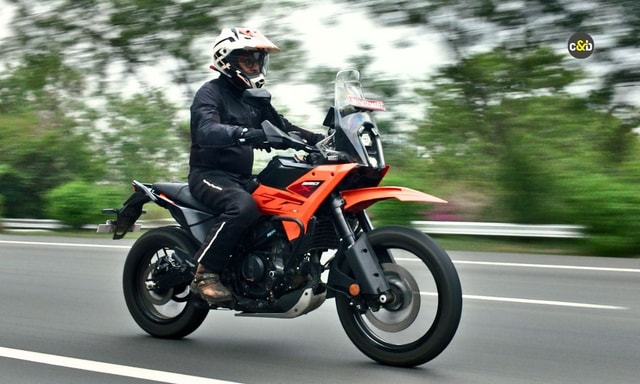 Preetam Bora | Dec 5, 2025KTM 390 Adventure, 390 Duke, 390 Enduro Recalled Over Engine Stall RiskThe recall for KTM 390 models has been announced to address an engine stall issue, and the engine control unit (ECU) will be updated free of charge in all affected motorcycles.1 min read
Preetam Bora | Dec 5, 2025KTM 390 Adventure, 390 Duke, 390 Enduro Recalled Over Engine Stall RiskThe recall for KTM 390 models has been announced to address an engine stall issue, and the engine control unit (ECU) will be updated free of charge in all affected motorcycles.1 min read Jaiveer Mehra | Dec 5, 2025Lexus LFA Revived As Electric Sports Car ConceptThe new LFA concept previews an all-electric super sports car based on the new Toyota GR GT.1 min read
Jaiveer Mehra | Dec 5, 2025Lexus LFA Revived As Electric Sports Car ConceptThe new LFA concept previews an all-electric super sports car based on the new Toyota GR GT.1 min read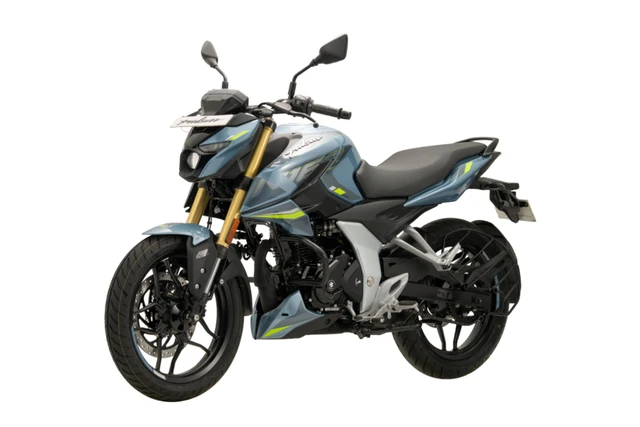 Carandbike Team | Dec 5, 2025Bajaj Pulsar N160 Variant With Gold USD Fork, Single Seat IntroducedThe new variant of the Pulsar N160 is priced at Rs. 1.24 lakh and aimed at offering more comfort and practicality with the single-piece seat.2 mins read
Carandbike Team | Dec 5, 2025Bajaj Pulsar N160 Variant With Gold USD Fork, Single Seat IntroducedThe new variant of the Pulsar N160 is priced at Rs. 1.24 lakh and aimed at offering more comfort and practicality with the single-piece seat.2 mins read car&bike Team | Dec 4, 2025Tata Harrier EV Fords Beas River In Red Bull Extreme StuntRed Bull is putting the Tata Harrier EV through some extreme stunts as part of a recent collaboration with Tata Motors.1 min read
car&bike Team | Dec 4, 2025Tata Harrier EV Fords Beas River In Red Bull Extreme StuntRed Bull is putting the Tata Harrier EV through some extreme stunts as part of a recent collaboration with Tata Motors.1 min read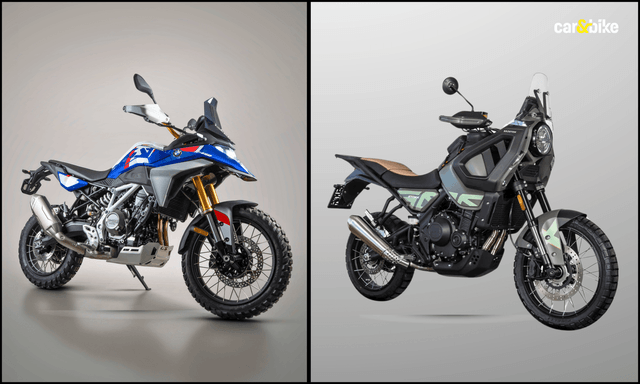 Jafar Rizvi | Dec 4, 2025BMW F 450 GS, Brixton Storr 500 Will Not Debut At India Bike Week 2025Soon after IBW confirmed its venue and dates -- following weeks of uncertainty -- two major participants pulled out of showcasing their new models at the event.2 mins read
Jafar Rizvi | Dec 4, 2025BMW F 450 GS, Brixton Storr 500 Will Not Debut At India Bike Week 2025Soon after IBW confirmed its venue and dates -- following weeks of uncertainty -- two major participants pulled out of showcasing their new models at the event.2 mins read Jaiveer Mehra | Dec 4, 2025Kia Previews Sleek New Coupe Concept: A Successor To The Stinger?The futuristic four-door coupe could preview a spiritual successor to the Stinger sports sedan or become a technological showpiece for the brand’s future technologies for its upcoming models.1 min read
Jaiveer Mehra | Dec 4, 2025Kia Previews Sleek New Coupe Concept: A Successor To The Stinger?The futuristic four-door coupe could preview a spiritual successor to the Stinger sports sedan or become a technological showpiece for the brand’s future technologies for its upcoming models.1 min read
 Girish Karkera | Dec 4, 20252026 Honda Prelude First Drive: Domesticated Civic Type RA sporty-looking coupe built to give customers a taste of performance but not at the expense of everyday practicality.5 mins read
Girish Karkera | Dec 4, 20252026 Honda Prelude First Drive: Domesticated Civic Type RA sporty-looking coupe built to give customers a taste of performance but not at the expense of everyday practicality.5 mins read Seshan Vijayraghvan | Nov 29, 2025Mahindra XEV 9S First Drive Review: Big Electric SUV, Bigger ExpectationsThe XEV 9S lands at a time when the EV crowd is growing fast. It’s a big, born-electric, three-row SUV that starts under 20 lakh. It sits close to the XUV700 in size, but the brief is very different. Here’s what it’s like on the road.11 mins read
Seshan Vijayraghvan | Nov 29, 2025Mahindra XEV 9S First Drive Review: Big Electric SUV, Bigger ExpectationsThe XEV 9S lands at a time when the EV crowd is growing fast. It’s a big, born-electric, three-row SUV that starts under 20 lakh. It sits close to the XUV700 in size, but the brief is very different. Here’s what it’s like on the road.11 mins read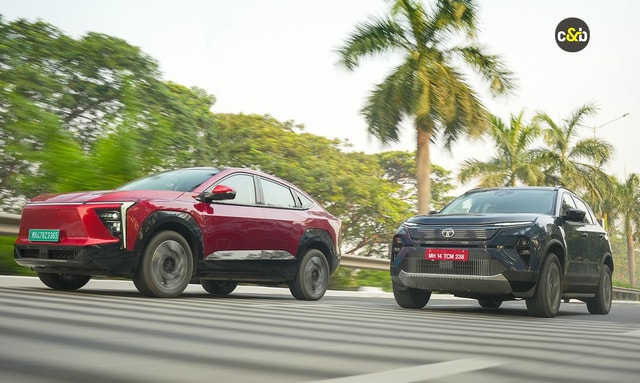 Bilal Firfiray | Nov 26, 2025Tata Harrier EV vs Mahindra XEV 9e: Battle Of India’s Electric TitansWhen India made two electric SUVs battle it out, the winner is the buyer. They get a choice to take home what’s best suited for them – and read on to find out which one is better for YOU.1 min read
Bilal Firfiray | Nov 26, 2025Tata Harrier EV vs Mahindra XEV 9e: Battle Of India’s Electric TitansWhen India made two electric SUVs battle it out, the winner is the buyer. They get a choice to take home what’s best suited for them – and read on to find out which one is better for YOU.1 min read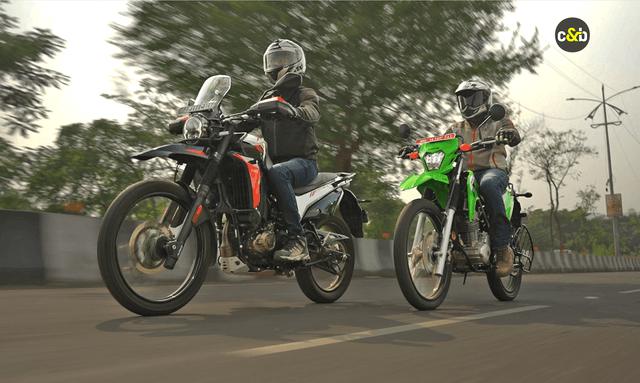 Janak Sorap | Nov 19, 2025Hero Xpulse 210 Vs Kawasaki KLX 230 Comparison Review: Dual-Sport DilemmaWith a price difference of just Rs 12,000, which of the two dual-sport motorcycles is meant for you?1 min read
Janak Sorap | Nov 19, 2025Hero Xpulse 210 Vs Kawasaki KLX 230 Comparison Review: Dual-Sport DilemmaWith a price difference of just Rs 12,000, which of the two dual-sport motorcycles is meant for you?1 min read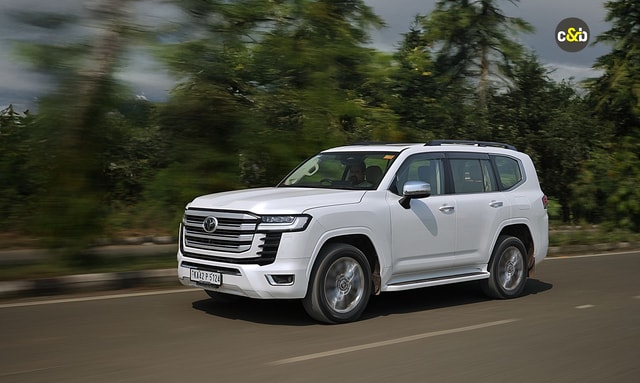 Jaiveer Mehra | Nov 17, 20252025 Toyota Land Cruiser 300 Review: Beast From The EastThe Land Cruiser name may have a long and storied history, but does it fit the bill for an Rs 2 crore-plus SUV in India?13 mins read
Jaiveer Mehra | Nov 17, 20252025 Toyota Land Cruiser 300 Review: Beast From The EastThe Land Cruiser name may have a long and storied history, but does it fit the bill for an Rs 2 crore-plus SUV in India?13 mins read













































































































































